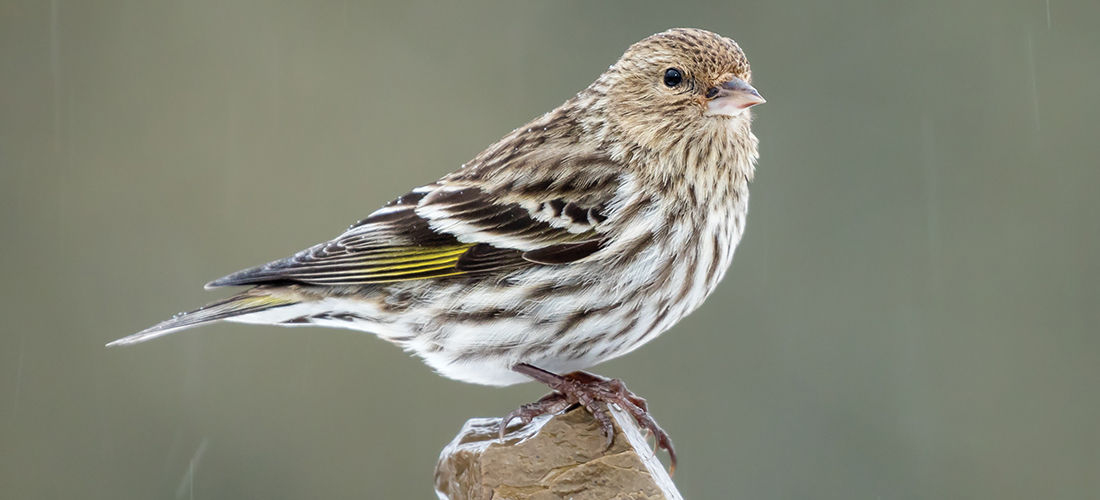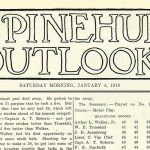
Wheezy Does It
Listen for the distinctive call of the pine siskin this winter
By Susan Campbell
Each winter I hear from folks who encounter small brown birds they cannot identify, sometimes visiting their feeders, other times pecking around on the forest floor. Some are American goldfinches in their dull, nonbreeding plumage. Others end up being identified as female house finches through their gray-brown coloration and their distinctive streaked breasts and bellies. But there are other possibilities — especially this season: That finch-like, striped visitor just might be a pine siskin.
In the Sandhills, these feisty little birds frequent evergreens with, as their name implies, pines being their favorite. They can often be seen clinging to the cones, determined to pry out the energy-rich seeds from within. However, they will not hesitate to search far and wide for other abundant seed sources. During the summer months, pine siskins usually are found breeding in the open, coniferous forests of the boreal region throughout northern states of the United States. They also range into southern Canada, as well as higher elevations of the Rockies and western mountain regions. Nondescript, with brown streaks and splashes of yellow on the wings and tail, these small birds are easy to miss. But the wheezy call coming from their little delicate bills is quite distinctive and hard to miss once you’ve heard it. Another tip for spotting them is to remember that pine siskins associate closely when breeding as well as foraging.
This winter we just may have an abundance of pine siskins here. That is because siskins are a species that ornithologists term “irruptive.” Like red-breasted nuthatches, cedar waxwings and purple finches, pine siskins are nomadic and move farther southward in winters when certain seed crops are in short supply across the northern forests. When these gregarious invaders find feeders offering sunflower or thistle seed, they will take up residence by the dozens. Most people maintaining a feeding station, at least in the Sandhills, have almost certainly hosted at least a few of these little Northerners during the last big irruption, which was five years ago.
As numerous as they may become in the weeks ahead, it is unlikely siskins will attempt to breed here. We have actually documented them staying through April in the past. But remaining individuals have always vanished with the early summer warm-up. Southern forests that mimic the usual northern habitat, such as our tracts of longleaf pine, certainly do have the necessary components for the birds to successfully breed, and attempts to be successful by other irruptive species have been documented in our area previously. The most remarkable of these were a few red crossbill pairs that bred in the area back in the mid-1970s.
The numbers of feathered winter visitors is surely on the rise now that natural food sources are becoming scarcer. After a summer that produced a bounty for wildlife, the inevitable depletion of seeds and berries is occurring. So definitely keep an eye (and an ear) out and keep your feeders full — a siskin or two just may drop by! PS
Susan would love to receive your wildlife sightings and photos. She can be contacted by email at susan@ncaves.com.





